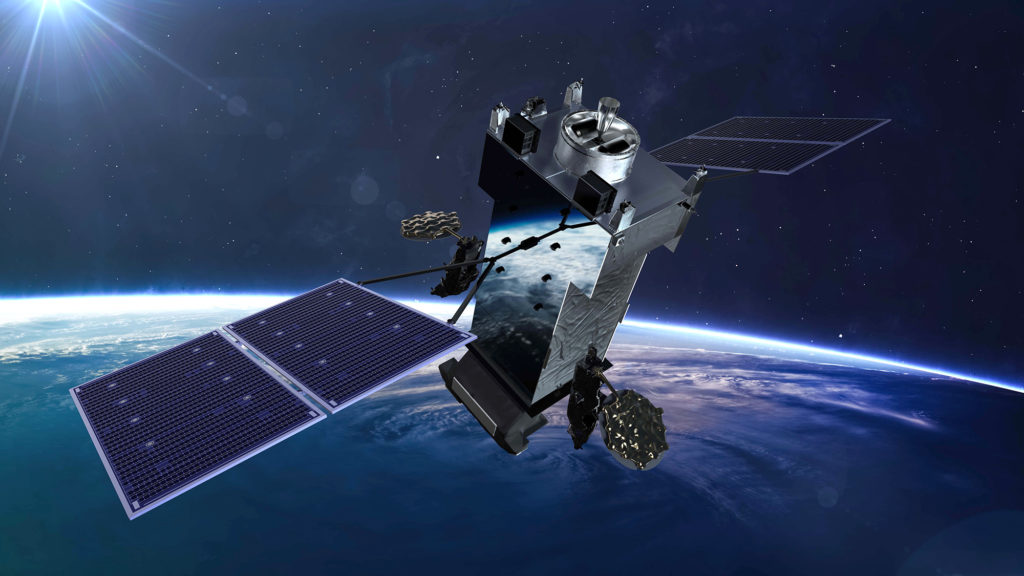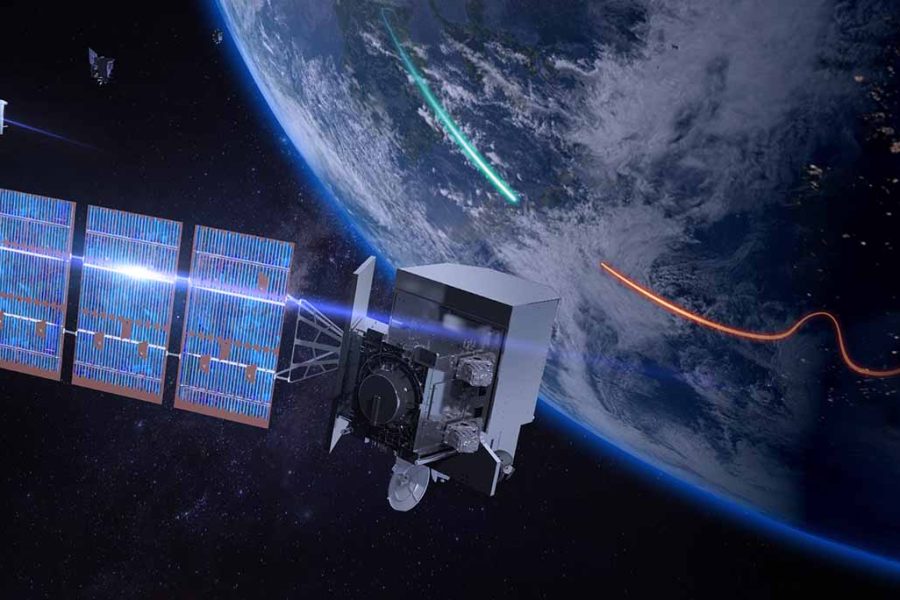The Space Force is working on dozens of new missile warning and tracking satellites that will go across every orbit in space—geosynchronous, polar, medium-Earth, and low-Earth. But a new report from a government watchdog noted issues in those programs which could lead to delays and other challenges.
As part of its annual weapons assessment report released this month, the Government Accountability Office (GAO) looked at five different missile warning/missile tracking programs within the Space Force, all of which are expected to start delivery in the next few years and comprise a massive portion of the service’s budget plans: $24.77 billion in the next five years.
Next-Gen OPIR
The longest in development, the Next-Generation Overhead Persistent (OPIR) Infrared program is meant to succeed the Space Based Infrared System (SBIRS) program and actually consists of three segments:
- Next-Gen OPIR GEO: Two satellites that will go into geosynchronous orbit.
- Next-Gen OPIR Polar: Two satellites that will go into polar orbit.
- FORGE: The ground segment that is meant to provide command and control and data processing for the satellites.
Originally, the Space Force planned to buy three GEO satellites, but the service’s other efforts in low- and medium-Earth orbit led it to cut one in its 2024 budget. Congress approved that cut, though some lawmakers expressed concerns about it and requested more information on the issue.
Even with the cut, the first GEO satellite appears likely to miss its 2025 launch date, the GAO found.
“The program continues to face schedule challenges, driven largely by the mission payload,” the agency’s report states. “According to the program office, flight hardware production and integration challenges already delayed payload delivery by roughly 11 months until July 2024. As a result, payload and space vehicle integration delays will likely result in launch delays and program cost increases. Our work in this area indicates that a launch delay of at least a year is likely for the first GEO satellite.”
The report, which is based on data up until January 2024, did note that program officials said they were “resolute” in trying to solve scheduling problems and meet their original launch date. But GAO is not the only one sounding the alarm about that not happening. Assistant Secretary of the Air Force for Space Acqusition and Integration Frank Calvelli told lawmakers in written testimony this spring that Next-Gen OPIR GEO was a program he was “watching closely.”
“The payload is in test, but over a year late,” he wrote. “We cannot afford delays, and I am engaging with this program frequently to mitigate further slips.”
That mission payload will be modified to go on the Next-Gen OPIR Polar satellites, which have more time before their first launch in 2028. However, the GAO report noted that program officials are “tracking risks associated with the integration of the main mission payload onto the space vehicle.” Should the satellite have to be modified, it could cause integration issues leading to delays or extra costs.

Yet perhaps the bigger risk to the Polar satellites is FORGE, which officials say has made incremental progress but still has a ways to go.
“Numerous development, integration, and testing steps are needed before the FORGE command and control functions will achieve readiness for system-level testing,” the GAO report states. “If FORGE command and control functions are still immature by the end of fiscal year 2026, the first polar satellite launch is likely to be delayed and program costs are likely to increase.”
The Space Force has selected four companies to work on a FORGE C2 prototype and plans to pick one to move forward later this year, the GAO noted, but the prototype would have to be completed by late 2028 to support the first Polar satellite launch.
In the interim, the service is working on what it calls Next-Gen Interim Operations (NIO) as a placeholder for FORGE. Considering the delays with FORGE’s C2 development, the interim “will be the only system available to command and control the space vehicles for several years,” the report notes.
Tracking Layer
The first eight demonstration satellites of the Space Development Agency’s (SDA’s) Tracking Layer are in low-Earth orbit after launches last year, and the agency’s focus has now turned to the 28 satellites that will make “Tranche 1” of that layer.
Expected costs on the Tranche 1 Tracking Layer have dipped 6 percent compared to last year, the GAO report noted, which did not note any schedule risks. SDA officials have said speed is their top priority, above cost and performance.
Yet performance in Tranche 1 may suffer, the GAO report warns. Specifically, since SDA developed an optical communications terminal (OCT) standard to encourage competition and interoperability.
‘However, it has a challenge of ensuring interoperability among multiple vendors because, per testing officials, the SDA OCT standard is different from commercial OCT standards, and vendors can have different interpretations of it,” the report states.
As a result, SDA officials said they may need to process the Tracking satellites’ data on the ground, then send it back up to the agency’s Transport Layer satellites for distribution. Such an arrangement could lead to delays in missile warning.
MEO
In between geosynchronous and low-Earth orbit, Space Systems Command has been working on a constellation of medium-Earth orbit satellites, slated to start launching in late 2026, early 2027.
The GAO report noted two critical technologies for these satellites that will not be mature until September 2026, according to program officials: optical sensors that will allow the satellites to pass data to each other directly, and “large format focal plane arrays, which are sensors that can capture images with high resolution and sensitivity.”
Officials also noted problems with shared access to the modeling and engineering tool being used to design the satellites and their payloads. Work on the report was completed before the Space Force announced it was canceling its contract with RTX to produce three of the nine satellites meant to go in the first batch.
Editor’s Note: This story was updated June 21 to correct the current estimate for the number of satellites in the Tranche 1 Tracking Layer.
